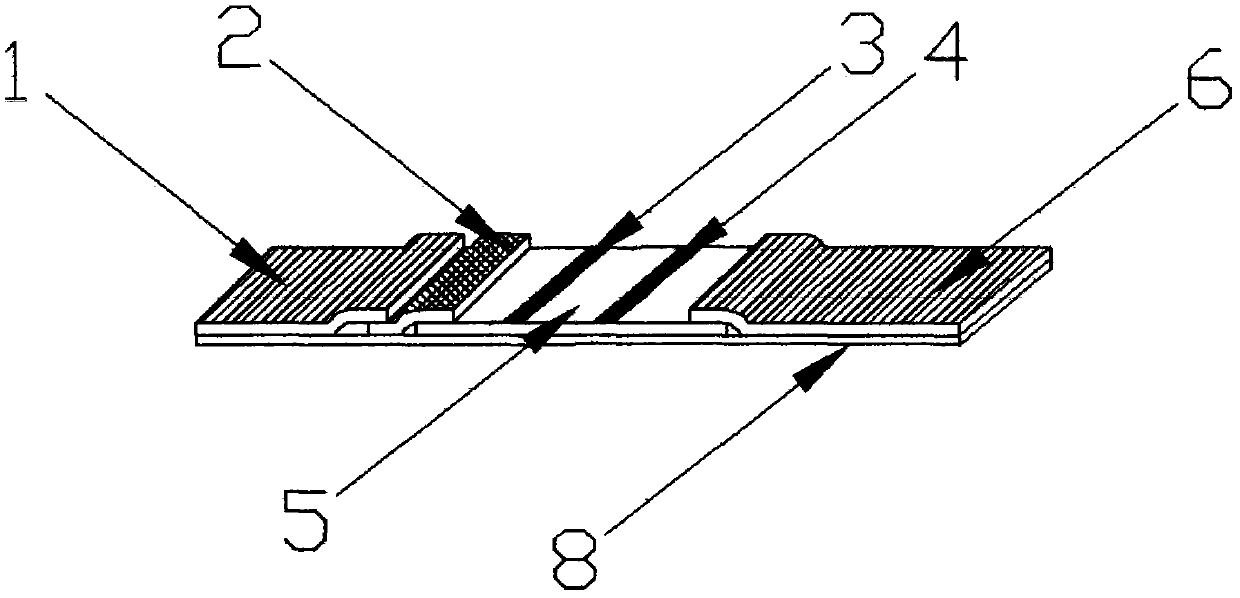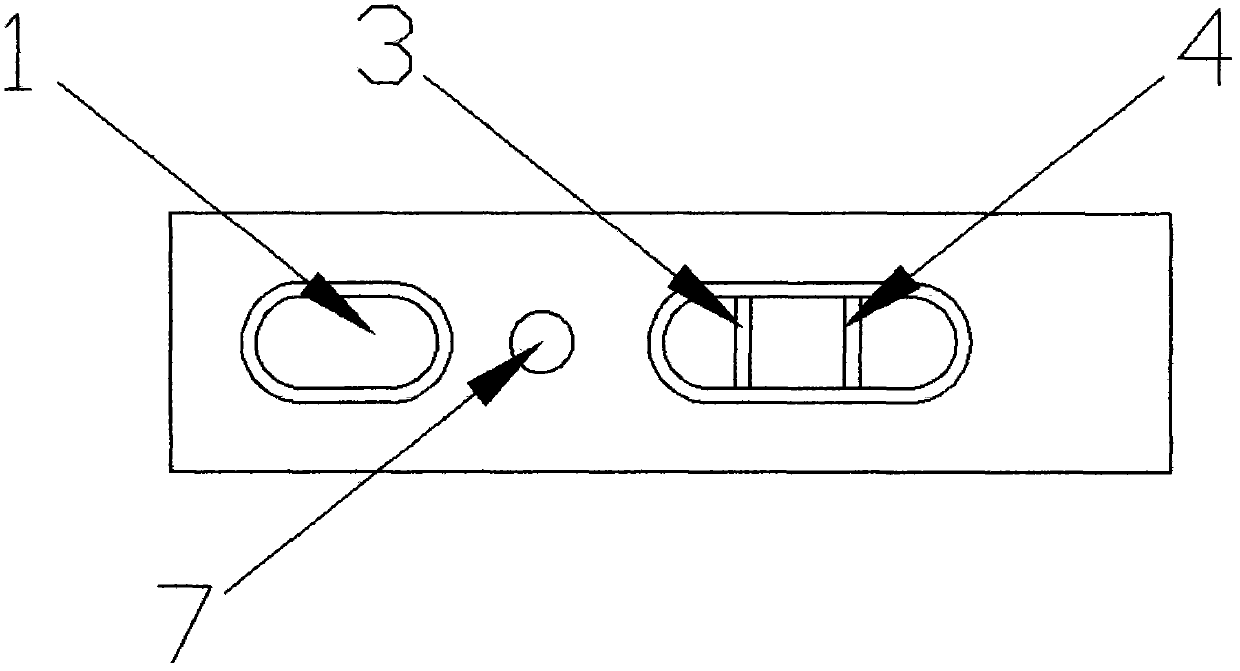Test strip and method for fast quantitative detection of drug in blood
A technology of quantitative detection and test strips, applied in measuring devices, instruments, scientific instruments, etc., can solve the problems of false positives, false negatives, and high sensitivity of urine samples
- Summary
- Abstract
- Description
- Claims
- Application Information
AI Technical Summary
Problems solved by technology
Method used
Image
Examples
Embodiment 1
[0027] Embodiment 1 Preparation and detection application of methadone colloidal gold detection test strip
[0028] 1.1 Preparation of colloidal gold-labeled methadone monoclonal antibody marker
[0029] Prepare a colloidal gold solution with a diameter of 40nm by chloroauric acid-trisodium citrate reduction method, and use 0.2MK 2 CO 3 The pH of the solution can be adjusted to pH 7-10, then the solution is placed on a magnetic stirrer and stirred slowly, and the methadone monoclonal antibody is slowly added to make the final concentration 5-15 μg / ml. Continue to stir for 1 hour, then add 0.2% sodium caseinate and 0.1% polyethylene glycol 20,000 to block for 30 minutes, centrifuge at 12,000 rpm for 30 minutes, discard the supernatant, redissolve to 76.5ml with colloidal gold working solution, press 1ml solution spread 16cm 2Spread evenly on the non-woven fabric, and then dry in a drying room at a temperature of 20-25°C and a humidity of less than 30% for 2-4 hours to make a...
Embodiment 2
[0039] Embodiment 2 Preparation and detection application of morphine latex method detection test strip
[0040] 2.1 Preparation of latex microsphere-labeled morphine monoclonal antibody marker
[0041] Take 1ml of red latex microspheres, add 9ml 0.1M pH6.5MES and mix well, add 0.75ml 10mg / ml NHS and 1ml 10mg / ml EDC·HCl, centrifuge for 20min, remove the supernatant, resuspend the precipitate with borax buffer, shake and sonicate After processing, the activated latex microspheres are formed. Dilute the morphine monoclonal antibody to 5mg / ml with 0.1M borax buffer (pH 8.5), take an appropriate amount of morphine monoclonal antibody and add 0.5ml activated latex microspheres, shake, centrifuge, remove the supernatant, and use 1% casein solution for precipitation Resuspend, ultrasonically pulverize and oscillate, repeat centrifugation once, remove the supernatant, resuspend the precipitate as above, ultrasonically pulverize and centrifuge again, and suspend the precipitate with a...
Embodiment 3
[0051] Example 3 Preparation and detection application of ketamine nano-immunomagnetic beads detection test strip
[0052] 3.1 Preparation of nano-magnetic bead-labeled ketamine monoclonal antibody marker
[0053] Take 10 mg of magnetic beads, prepare 1% nano-magnetic bead solution with 50 mM MES (pH5.7), add 0.5 mg of water-soluble EDC, 37 ° C for 10 min, then add appropriate amount of ketamine monoclonal antibody, incubate at 37 ° C for 2 hours, and then use The magnetic frame adsorbs the magnetic beads, and the buffer is exchanged to 0.01M PBS (pH7.2), containing 0.5% BSA, 0.5% Tween, and the labeling is completed. Then use the working solution to make a 0.5mg / ml solution, spread 22cm according to 1ml solution 2 Spread evenly on the glass fiber membrane and dry for 2-4 hours to make a nano-immunomagnetic bead-antibody marker pad for later use.
[0054] 3.2 Ketamine synthetic immune antigen coating
[0055] Dilute the morphine-synthesized immune antigen with 0.01M pH7.2PB...
PUM
 Login to View More
Login to View More Abstract
Description
Claims
Application Information
 Login to View More
Login to View More - R&D
- Intellectual Property
- Life Sciences
- Materials
- Tech Scout
- Unparalleled Data Quality
- Higher Quality Content
- 60% Fewer Hallucinations
Browse by: Latest US Patents, China's latest patents, Technical Efficacy Thesaurus, Application Domain, Technology Topic, Popular Technical Reports.
© 2025 PatSnap. All rights reserved.Legal|Privacy policy|Modern Slavery Act Transparency Statement|Sitemap|About US| Contact US: help@patsnap.com


